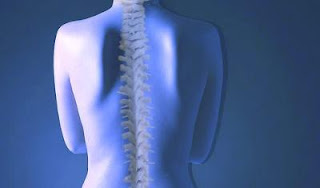Spinal injuries are among the most disabling conditions affecting wounded members of the U.S. military. Yet until recently, the nature of those injuries had not been adequately explored.
In a new study recently published in the Journal of Bone and Joint Surgery (JBJS), a team of orthopaedic surgeons reviewed more than eight years of data on back, spinal column, and spinal cord injuries sustained by American military personnel while serving in Iraq or Afghanistan. The injuries were then categorized according to anatomic location, neurological involvement, the cause of the injury, and accompanying wounds.
The resulting analysis is an important first step in helping orthopaedic surgeons develop treatment plans for these service members, as well as for severely injured civilians who sustain similar disabling injuries.
Key Findings:
Of 10,979 evacuated combat casualties, 598 (5.45 percent) sustained a total of 2,101 spinal injuries.
Explosions accounted for 56 percent of spine injuries, motor vehicle collisions for 29 percent, and gunshots for 15 percent.
- 92 percent of all injuries were fractures.
- The average age at the time of injury was 26.5 years of age.
- 90 percent of the injured were enlisted personnel.
- 84 percent of patients sustained their wounds as a result of combat.
- In 17 percent of injuries to the spine, the spinal cord also was injured.
- 53 percent of all gunshot wounds to the spine resulted in a spinal cord injury.
- Spinal injuries were frequently accompanied by injuries to the abdomen, chest, head, and face.
- "In these current military conflicts, the latest technologies in body armor, helmets, and other protective devices have helped save many soldiers' lives," says James A. Blair, MD, an orthopaedic surgery chief resident in the Department of Orthopaedics and Rehabilitation, Brooke Army Medical Center, Fort Sam Houston, TX. "We also have access to advanced life-saving techniques in the field and medical evacuation strategies that are keeping many more service members alive.
"But when a person survives an explosion or vehicle collision, there has still been a great deal of force on the body," Blair adds. "Many of those survivors are coming to us with severe injuries to their spine and back. We needed to describe and characterize these injuries so recommendations can be made on how to provide the most effective treatment and rehabilitation for our wounded warriors."
Although the survival rate is high for such injuries, the disability rate also is quite high. This affects not only the service members, but also their families and the U.S. healthcare system. Therefore, the study's authors note, further research is required to improve future outcomes for those with spinal injuries.
(Source: medicalnewstoday.com)

No comments:
Post a Comment